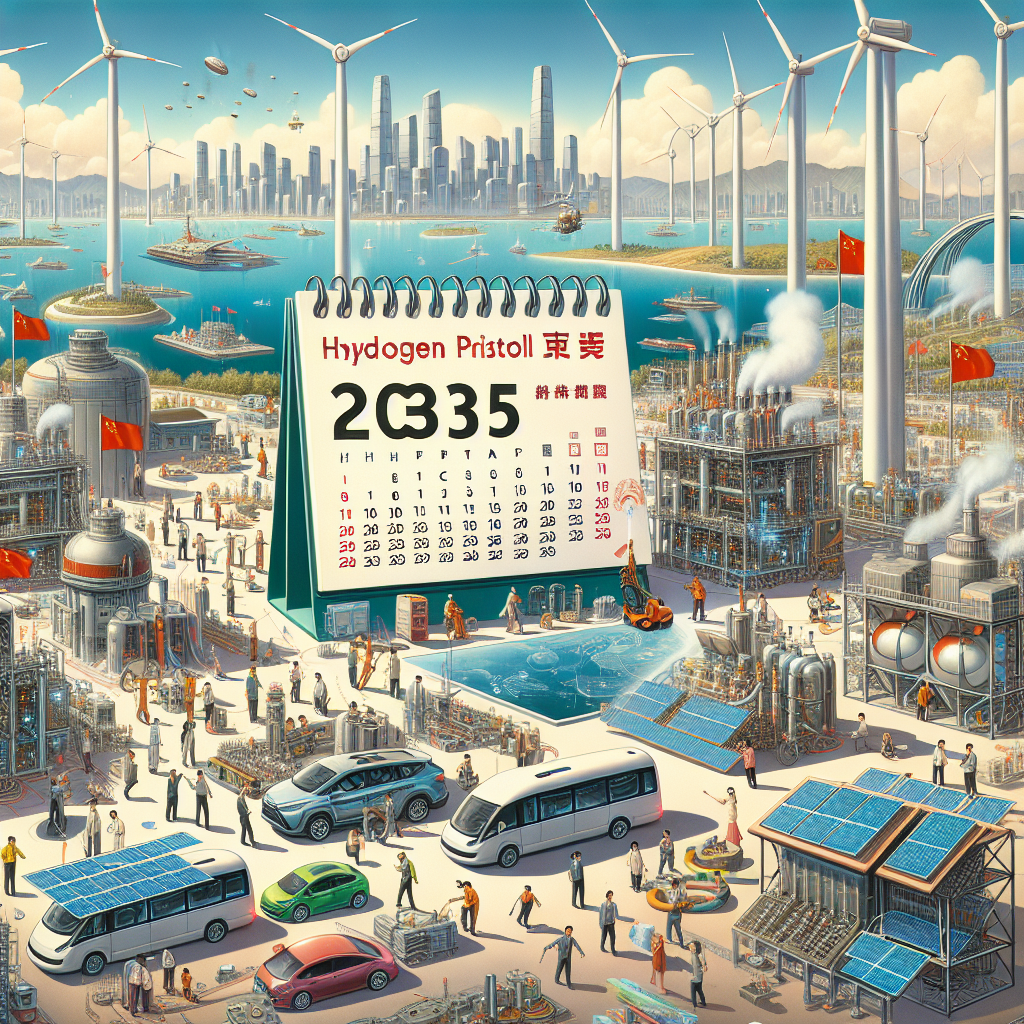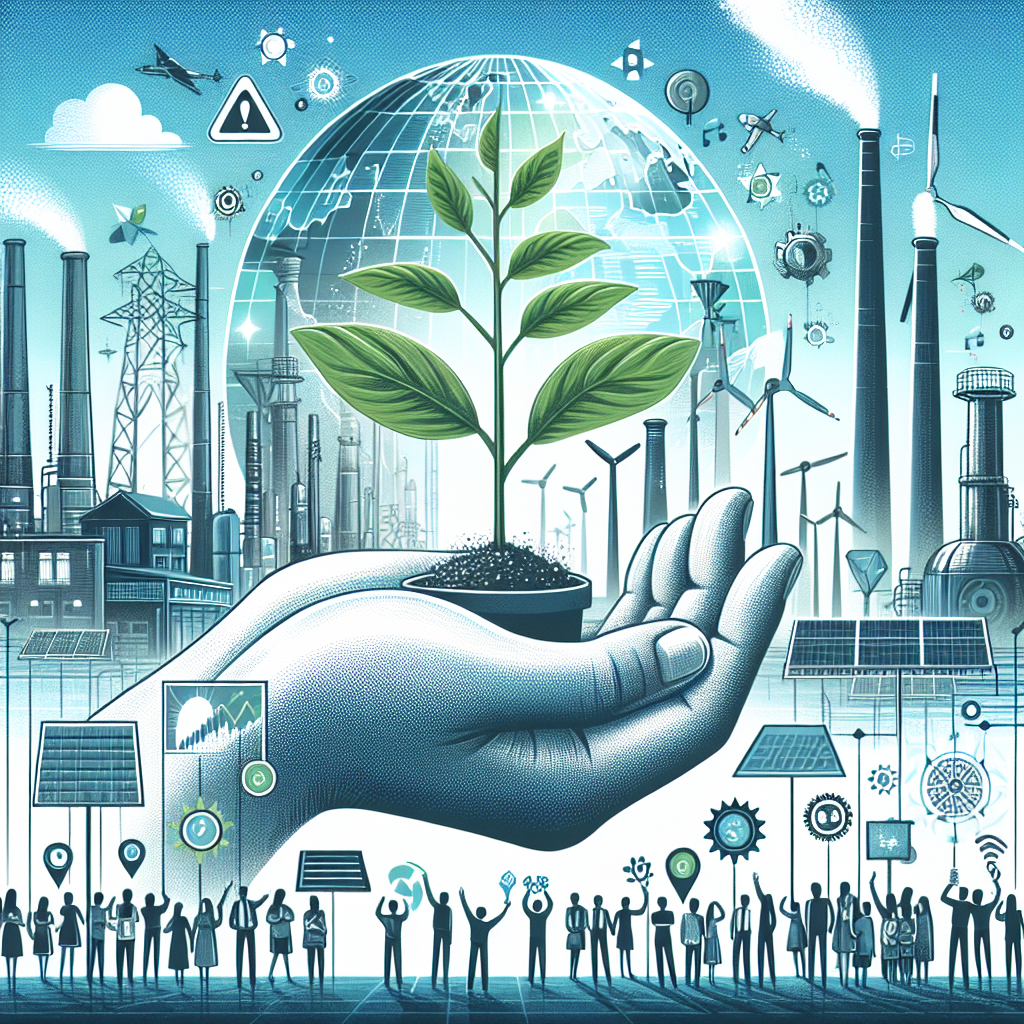“Powering your business with efficient and sustainable energy solutions.”
Introduction
Commercial energy systems refer to the various methods and technologies used to generate, distribute, and manage energy for commercial and industrial purposes. These systems play a crucial role in powering businesses and industries, providing them with the necessary energy to operate and thrive. With the increasing demand for energy and the growing focus on sustainability, commercial energy systems have become a critical aspect of modern society. They encompass a wide range of sources, including traditional fossil fuels, renewable energy sources, and emerging technologies, all working together to meet the energy needs of commercial and industrial sectors. In this introduction, we will explore the different types of commercial energy systems and their importance in today’s world.
The Benefits of Implementing Commercial Energy Systems
Commercial energy systems are becoming increasingly popular among businesses of all sizes. These systems are designed to help companies reduce their energy consumption and costs, while also promoting sustainability and environmental responsibility. In this article, we will explore the benefits of implementing commercial energy systems and how they can positively impact businesses.
One of the main benefits of commercial energy systems is the cost savings they provide. By implementing energy-efficient technologies and practices, businesses can significantly reduce their energy bills. This is especially important for small and medium-sized enterprises (SMEs) that may have limited budgets and resources. With commercial energy systems, these businesses can save money on their utility bills, allowing them to allocate those funds towards other areas of their operations.
Moreover, commercial energy systems can also help businesses become more competitive in their respective industries. In today’s market, consumers are becoming increasingly conscious of a company’s environmental impact and are more likely to support businesses that prioritize sustainability. By implementing energy-efficient practices, businesses can showcase their commitment to reducing their carbon footprint and appeal to environmentally-conscious consumers. This can give them a competitive edge over other companies that are not prioritizing sustainability.
Another benefit of commercial energy systems is their positive impact on the environment. Traditional energy sources, such as fossil fuels, contribute to air and water pollution, as well as greenhouse gas emissions. By implementing energy-efficient technologies, businesses can reduce their reliance on these harmful energy sources and instead use renewable energy sources, such as solar or wind power. This not only helps to protect the environment but also promotes a healthier and more sustainable future for all.
In addition to cost savings and environmental benefits, commercial energy systems also offer long-term stability for businesses. With traditional energy sources, businesses are subject to fluctuating energy prices, which can greatly impact their bottom line. By implementing energy-efficient practices, businesses can reduce their dependence on these volatile energy sources and instead rely on more stable and predictable renewable energy sources. This can provide businesses with a sense of security and stability, allowing them to better plan and budget for their energy expenses.
Furthermore, implementing commercial energy systems can also improve the overall efficiency of a business. Energy-efficient technologies, such as LED lighting and smart thermostats, can help businesses reduce their energy consumption without sacrificing productivity. In fact, these technologies can often improve productivity by creating a more comfortable and efficient work environment. This can lead to increased employee satisfaction and ultimately, better business outcomes.
Lastly, implementing commercial energy systems can also have a positive impact on a company’s reputation and brand image. As mentioned earlier, consumers are becoming more environmentally-conscious and are actively seeking out businesses that prioritize sustainability. By implementing energy-efficient practices, businesses can improve their reputation and brand image, which can lead to increased customer loyalty and trust. This can also attract new customers who are looking to support environmentally-responsible businesses.
In conclusion, the benefits of implementing commercial energy systems are numerous and can greatly impact businesses in a positive way. From cost savings and environmental benefits to improved efficiency and a better brand image, these systems offer a wide range of advantages for businesses of all sizes. As the world continues to prioritize sustainability, it is crucial for businesses to consider implementing commercial energy systems to stay competitive and contribute to a more sustainable future.
Maximizing Cost Savings with Commercial Energy Systems

Commercial energy systems are an essential aspect of any business operation. From powering equipment and lighting to heating and cooling, energy is a crucial resource for commercial buildings. However, with the rising costs of energy and the increasing demand for sustainable practices, businesses are looking for ways to maximize cost savings with their energy systems.
One of the most effective ways to achieve cost savings with commercial energy systems is through energy efficiency. This involves using energy in a more efficient and sustainable manner, resulting in reduced energy consumption and lower utility bills. There are various strategies that businesses can implement to improve energy efficiency in their buildings.
One strategy is to conduct an energy audit. This involves a thorough assessment of the building’s energy usage, identifying areas of high energy consumption and potential areas for improvement. An energy audit can be conducted by a professional energy auditor or by using online tools and resources. The results of an energy audit can provide valuable insights into where energy is being wasted and how it can be conserved.
Another effective strategy for maximizing cost savings with commercial energy systems is to invest in energy-efficient equipment and appliances. This includes energy-efficient lighting, HVAC systems, and office equipment. These energy-efficient options may have a higher upfront cost, but they can result in significant long-term savings through reduced energy consumption. Additionally, businesses can take advantage of government incentives and rebates for investing in energy-efficient equipment.
Implementing energy management systems is another way to achieve cost savings with commercial energy systems. These systems use advanced technology to monitor and control energy usage in a building. They can automatically adjust lighting and temperature settings based on occupancy and time of day, resulting in reduced energy consumption. Energy management systems also provide real-time data and analytics, allowing businesses to track their energy usage and identify areas for improvement.
In addition to these strategies, businesses can also implement simple yet effective practices to maximize cost savings with their commercial energy systems. This includes turning off lights and equipment when not in use, using natural lighting whenever possible, and properly maintaining equipment to ensure it is running efficiently. These small changes can add up to significant cost savings over time.
Another important aspect of maximizing cost savings with commercial energy systems is to educate and involve employees. Employees play a crucial role in energy conservation, and their actions can have a significant impact on energy usage. By educating employees on energy-saving practices and involving them in energy-saving initiatives, businesses can create a culture of energy efficiency within their organization.
Furthermore, businesses can also consider investing in renewable energy sources to reduce their reliance on traditional energy sources. Solar panels, wind turbines, and geothermal systems are all viable options for commercial buildings. While the initial investment may be significant, these renewable energy sources can provide long-term cost savings and reduce the environmental impact of the business.
In conclusion, maximizing cost savings with commercial energy systems requires a comprehensive approach that involves implementing energy-efficient strategies, investing in energy-efficient equipment, and educating and involving employees. By taking a proactive approach to energy management, businesses can not only achieve significant cost savings but also contribute to a more sustainable future. With the rising costs of energy and the increasing demand for sustainable practices, it is crucial for businesses to prioritize energy efficiency and explore alternative energy sources to stay competitive in today’s market.
The Future of Commercial Energy Systems: Trends and Innovations
Commercial energy systems play a crucial role in powering businesses and industries around the world. As the demand for energy continues to rise, it is essential to explore new trends and innovations in commercial energy systems to ensure a sustainable and efficient future.
One of the most significant trends in commercial energy systems is the shift towards renewable energy sources. With the increasing concern for climate change and the depletion of fossil fuels, businesses are turning to renewable energy sources such as solar, wind, and hydro power. These sources not only reduce carbon emissions but also provide a long-term and cost-effective solution for businesses.
Another trend in commercial energy systems is the use of smart technology. With the advancement of technology, businesses can now monitor and control their energy usage in real-time. Smart meters, sensors, and energy management systems allow businesses to track their energy consumption and make adjustments to optimize efficiency. This not only reduces energy costs but also helps in identifying areas for improvement and reducing wastage.
In addition to renewable energy and smart technology, energy storage is also a growing trend in commercial energy systems. With the intermittent nature of renewable energy sources, energy storage systems are crucial in ensuring a constant and reliable energy supply. These systems store excess energy generated from renewable sources and release it when needed, reducing the reliance on traditional energy sources.
One of the most significant innovations in commercial energy systems is the use of microgrids. Microgrids are small-scale energy systems that can operate independently or in conjunction with the main power grid. They can be powered by renewable energy sources and provide a reliable and sustainable energy supply for businesses. Microgrids also have the potential to reduce energy costs and increase energy security, making them an attractive option for businesses.
Another innovation in commercial energy systems is the use of artificial intelligence (AI). AI technology can analyze vast amounts of data and make real-time adjustments to optimize energy usage. This can lead to significant energy savings for businesses, as AI can identify patterns and make predictions to improve energy efficiency. AI can also be used in energy management systems to automate processes and reduce human error, further increasing efficiency.
The integration of electric vehicles (EVs) into commercial energy systems is also a growing trend. With the rise in popularity of EVs, businesses are now looking to incorporate them into their energy systems. EVs can be used as a source of energy storage, and their batteries can be charged during off-peak hours when energy costs are lower. This not only reduces the strain on the power grid but also provides a sustainable solution for transportation.
Apart from these trends and innovations, there are also efforts to make commercial energy systems more sustainable and environmentally friendly. For instance, green buildings are becoming increasingly popular, with features such as solar panels, energy-efficient lighting, and insulation. These buildings not only reduce energy consumption but also have a positive impact on the environment.
In conclusion, the future of commercial energy systems is moving towards sustainability, efficiency, and innovation. With the increasing demand for energy and the need to reduce carbon emissions, businesses are adopting renewable energy sources, smart technology, energy storage, microgrids, AI, and EVs. These trends and innovations not only benefit businesses but also contribute to a more sustainable and greener future for all. It is essential for businesses to stay updated with these developments and incorporate them into their energy systems to stay competitive and contribute to a better world.
Q&A
1) What are commercial energy systems?
Commercial energy systems refer to the various methods and technologies used to generate, distribute, and manage energy for commercial or business purposes. This can include traditional sources such as electricity from power plants, as well as renewable sources like solar or wind energy.
2) Why are commercial energy systems important?
Commercial energy systems are important because they provide the necessary energy for businesses to operate and thrive. They also play a crucial role in economic development and growth, as well as meeting the energy demands of a growing population. Additionally, with the increasing focus on sustainability and reducing carbon emissions, efficient and renewable commercial energy systems are becoming more important.
3) What are some examples of commercial energy systems?
Some examples of commercial energy systems include power plants, solar panels, wind turbines, geothermal systems, and hydroelectric dams. Other technologies such as energy storage systems, smart grids, and energy management software are also becoming more prevalent in commercial energy systems.
Conclusion
In conclusion, commercial energy systems play a crucial role in powering businesses and industries around the world. These systems provide reliable and efficient sources of energy, allowing businesses to operate smoothly and effectively. However, with the increasing demand for energy and the negative impact of traditional energy sources on the environment, there is a growing need for more sustainable and renewable energy solutions. As such, it is important for businesses to invest in and adopt cleaner and greener energy systems to not only reduce their carbon footprint but also save on energy costs in the long run. With advancements in technology and a greater focus on sustainability, the future of commercial energy systems looks promising and will continue to evolve to meet the changing needs of businesses and the environment.



















